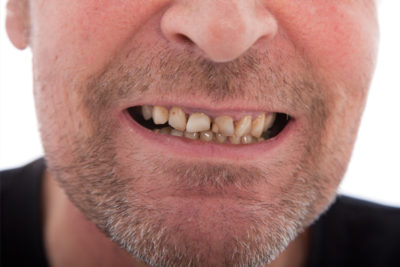Call Us Today! (403) 277-7464 NEW PATIENTS: (587) 317-9910 | 116-30 Springborough Blvd SW, CALGARY AB T3H 0N9

Diagnosing Gum Disease

Periodontal disease is diagnosed by your dentist or dental hygienist during a periodontal examination. This type of exam should always be part of your regular dental check-up.
A periodontal probe (small dental instrument) is gently used to measure the sulcus (pocket or space) between the tooth and the gums. The depth of a healthy sulcus measures three millimeters or less and does not bleed. The periodontal probe helps indicate if pockets are deeper than three millimeters. As periodontal disease progresses, the pockets usually get deeper.
We also use some advanced diagnostic and treatment tools to aid us to ensure we provide the most effective solutions possible for our patients. These are the patent-pending OraVital® System and OralDNA® System. These allow us to uncover hidden pathogens that can affect both your oral and overall health and discover if you have genetic markers that indicate if you are predisposed to inflammation (OralDNA® System). We can also see if you have any of the types of HPV that can be associated with oral cancer.
The OraVital® System also reduces bleeding when probing and reduces gum pockets by as much as 80% before beginning other therapy.
These tools are especially important when traditional periodontal treatments are not combatting the disease. This helps us find the underlying cause and treat it.
Your dentist or hygienist will use pocket depths, amount of bleeding, inflammation, tooth mobility, etc., in diagnosing gum disease that will fall into a category below:
Gingivitis
Gingivitis is the first stage of periodontal disease. Plaque and its toxin by-products irritate the gums, making them tender, inflamed, and likely to bleed.
Periodontitis
Plaque hardens into calculus (tartar). As calculus and plaque continue to build up, the gums begin to recede from the teeth. Deeper pockets form between the gums and teeth and become filled with bacteria and pus. The gums become very irritated, inflamed, and bleed easily. Slight to moderate bone loss may be present.
Advanced Periodontitis
The teeth lose more support as the gums, bone, and periodontal ligament continue to be destroyed. Unless treated, the affected teeth will become very loose and may be lost. Generalized moderate to severe bone loss may be present.
Copyright 2025 Springbank Dental Centre & Dental Growth Strategies | All Rights Reserved | Powered by Dental Growth Strategies

